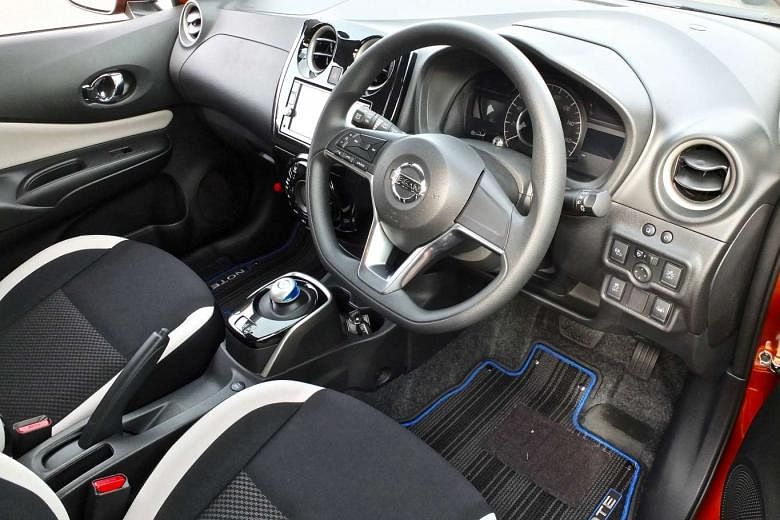Just like flat-screen TVs, electric vehicles (EVs) will improve and their cost will drop over time.
But Nissan's executive vice-president for global sales & marketing Daniele Schillaci concedes that it could take another decade or so before the cost of EVs equalise with that of internal combustion engine cars. In the interim, hybrid cars may be the more pragmatic and more affordable step towards greener mobility.
Nissan might just have a game changer in the new Note e-Power compact hybrid. Unlike parallel hybrids from Toyota and Honda, which are driven by both electric motor and petrol engine, the Note e-Power is driven solely by an electric motor.
The Note's 1.2-litre three-cylinder engine has been retained, but it acts solely as a generator to charge the batteries. This makes it like an EV that carries its own mini power station. Hence, there is no range anxiety.
According to chief powertrain engineer Naoki Nakada, "the e-Power system allows you to enjoy all the benefits of an EV without having to worry about charging the battery".
-
SPECS/ NISSAN NOTE e-POWER
-
Price: Unavailable
Drivetrain: Synchronous electric motor with 1.2-litre 3-cylinder petrol engine for battery charging
Transmission: Single-speed
Power: 109bhp
Torque: 254Nm
0-100kmh: Unavailable
Top speed: Unavailable
Fuel consumption: 2.94 litres/100km
Agent: Tan Chong Motor
With a small battery pack (1/20 the size of the electric Nissan Leaf's), the Note e-Power benefits from lower cost and weight, and is space saving too - the pack is tucked neatly beneath the front seats and does not encroach into the compact hatch's cabin.
The car is very quiet, with just the electric motor running, until its buzzy petrol engine kicks in to charge up the battery. Unfortunately, this happens all too often because of the pint-sized 1.5kWh battery, which drains rather quickly.
Although we had to keep between 50kmh and 100kmh on assigned stretches of the Oppama test circuit, the near instantaneous 254Nm of torque from the high output electric motor (the same 80kW motor in the Leaf) made for lively and linear acceleration from any speed.
Nissan did not provide any performance figures. But it did feel sprightlier than its supercharged 1.2-litre petrol Note (with 112Nm less torque).
Three drive modes are available - Normal, S (Smart) and Eco. In Normal, it felt almost like a regular hatch. In S or Eco, it displayed noticeable regenerative braking whenever I lifted my foot off the accelerator (like an EV).
Eco mode also reduces power output slightly and manages climate control to stretch the driving range.
According to the optimistic Japan JC08 test-cycle, the Note e-Power's fuel consumption of 34km/litre (2.94 litres/100km) is 30 per cent superior to the supercharged Note's.
I did manage 27km/litre (or 3.7 litres/100km), which is what a conventional hybrid would attain.
The icing on the cake is that the car does not cost substantially more than the petrol Note.
The Note e-Power X retails at 1,959,120 yen (S$24,100), 13 per cent more than the supercharged petrol X DIG-S version. This explains why it is topping sales charts in Japan.
It is not clear if the Note e-Power will make it to Singapore. Nissan agent Tan Chong Motor says the plan is being considered.
•The writer contributes to Torque, a motoring monthly published by SPH Magazines.


